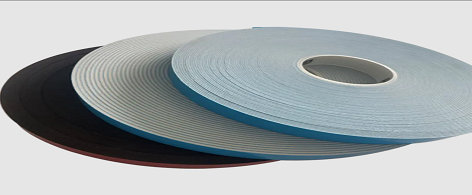Cat:Glue -coated Protective Film
● Protect window glass against paint splatters, dirt, staining, and spillages during painting, building, plastering, tiling, general maintenance and r...
See Details
The double-sided foam adhesive tape has become an important solution in the fields of modern home decoration, industrial manufacturing, electronic equipment assembly and automobile parts fixation, with its excellent viscosity, cushioning performance and adaptability. Compared to traditional mechanical fixation methods such as screws, nails, or welding, it is not only easy to install, but also avoids damage to the material surface, while providing excellent seismic and sealing performance. However, in order to truly unleash its super strong adhesive potential, optimization must be carried out from multiple aspects such as material selection, surface treatment, construction techniques, and application environment.
It is important to choose the right type of double-sided foam tape. There are a wide variety of products on the market, and tapes with different formulas are suitable for different scenarios. For example, ordinary high viscosity double-sided foam tape is suitable for pasting light objects such as hooks, picture frames or signs, and its acrylic pressure sensitive adhesive can be firmly attached to smooth surfaces such as glass, metal or plastic. The 3M VHB (Super Adhesive) series is designed specifically for high demand industrial applications, such as automotive decorative strips, building curtain walls, or fixing heavy equipment. Its closed cell foam substrate can withstand long-term wind pressure, vibration, and temperature changes. In addition, for the installation of indoor home furnishings or precision electronic products, low VOC environmentally friendly tape is more suitable. It can reduce the release of harmful gases and avoid affecting sensitive components or human health.
After selecting the appropriate tape, surface treatment is a key step in ensuring adhesive strength. Even the strongest double-sided foam adhesive tape will greatly reduce its adhesion if there is oil stain, dust or oxide layer on the bonding surface. Before construction, the surface should be thoroughly wiped with isopropanol or specialized cleaning agents to remove grease and impurities. For some difficult to stick materials such as polyethylene PE, polypropylene PP, or silicone rubber, cleaning alone may not be enough. In this case, a primer can be used in combination. The primer can change the chemical properties of the material surface, significantly improving the wettability and adhesion of the tape. In addition, if the bonding surface is too smooth (such as certain plastics or coated metals), it can be lightly sanded with fine sandpaper to increase roughness and enhance mechanical bite.
The correct construction method also has a decisive impact on the bonding effect. When pasting, the appropriate size of tape should be measured and cut first to ensure that it completely covers the bonding area but does not exceed the edge. After tearing off one side of the release paper, apply the tape flat on the substrate and apply uniform pressure with fingers or a pressure roller (about 10-30 seconds) to eliminate bubbles and promote sufficient contact between the adhesive layer and the surface. Then tear off the release paper on the other side, align it with the target position for bonding, and apply pressure again to ensure firm adhesion. It should be noted that many high-performance double-sided foam adhesive tapes (especially VHB series) do not reach the maximum strength at the initial stage, and it usually takes more than 24 hours of curing time to fully exert its viscosity. During this period, excessive external force or vibration should be avoided, otherwise it may cause displacement or even detachment.
Environmental factors will also affect the performance of double-sided foam tape. Under low temperature conditions (such as outdoor construction in winter), the initial adhesion of the tape may decrease. At this time, a hair dryer can be used to heat the bonding surface appropriately (about 40-60 ℃) to improve the fluidity and wetting effect of the adhesive layer. In environments with high temperatures or direct sunlight, weather resistant products should be selected to avoid aging and failure of the adhesive layer caused by ultraviolet radiation or long-term high temperatures. For applications that require long-term vibration or impact (such as automotive electronic devices or industrial machinery), it is recommended to use adhesive tape with high thickness foam substrate (such as 2mm or more), whose elastic structure can effectively absorb energy and reduce stress concentration.
In practical applications, the super viscosity of double-sided foam adhesive tape can meet diversified needs. For example, in home decoration, it can be used to fix mirrors, wall panels, or baseboards, which is not only quick to install but also does not damage the wall surface; In the electronic manufacturing industry, it can replace screws to fix display screens, batteries, or sensor modules, while providing good electromagnetic shielding and dust-proof sealing effects; In the automotive field, VHB tape has been widely used for bonding car logos, decorative strips, and even some structural components, which not only reduces the weight of the entire vehicle but also enhances its aesthetic appeal. However, it should be noted that although the double-sided foam tape has excellent performance, it still needs to be mechanically fixed to enhance reliability under some extreme conditions (such as long-term immersion in water or sustained peeling force).